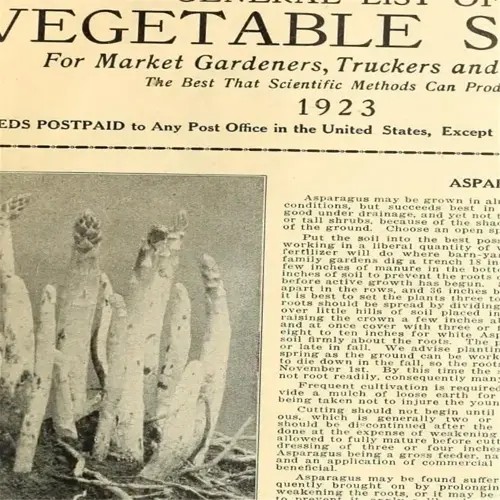How to Grow Almonds: Simplified Guide for Bountiful Harvests

Written by
Michael Sullivan
Reviewed by
Prof. Charles Hartman, Ph.D.Understand how to cultivate almonds in zones 5-9 with the appropriate chill hours
Select self-fertile or cold-hardy varieties like All-In-One for optimal success
Select soil that has good drainage and has a pH 6.0-7.5, and make it a point to check for nematodes annually
Water young trees 3-5 gallons of water per week, and apply fertilizer that is high in nitrogen early on
Prune in late winter and treat for pests using Bacillus thuringiensis sprays
When husks open up for harvest, shelled nuts can be stored in the freezer for longer periods of time.
Article Navigation
Finding how to grow almonds begins with selecting a tree that provides beauty and bounty. Almond trees are stunning with their pale pink blooms in spring, before developing into a nut-bearing tree with both beauty and bounty. Sweet varieties, such as Nonpareil, provide edible kernels, whereas bitter varieties, such as Hall's Hardy, can be used for ornamentation.
These trees flourish in USDA zones 5-9 and can flourish in both Mediterranean regions as well as cold locations. Northern growers utilize cold-tolerant cultivars, such as Hall's Hardy, that can survive in winter where low temperatures fall below -10°F. Selection is dependent upon matching your variety with local frost patterns as well as summer heat.
Preparation of soil provides the foundation for healthy growth. Test the pH level of your soil and try to aim for a pH range of 6.0-7.5, and amend clay-heavy earth with compost to condition and improve drainage. I have saved some saplings that did not appear they would survive by adding perlite to the compacted soil, and I find that perlite prevents root rot during wet periods.
Ensuring that prunes and pest inspections are made regularly could allow your tree to produce nuts for as long as 50 years. One of my oldest trees, which I planted in a well-drained loam and do annual nematode testing, produces 30 pounds of almonds a year, even with its gnarled, old trunk.
Choosing the Best Almond Variety
Choosing an appropriate variety of almonds means balancing safety with some measure of production. Sweet almonds like All-In-One will provide edible nuts while bitter almonds are high in toxic cyanide compounds. I helped a former neighbor replace a bitter almond tree after their dog got sick from lots of fallen nuts. Therefore, if you are gardening at home and expect to eat from the tree, consider going with sweet cultivars.
How the climate suits your best options. Nonpareil, the gold standard of flavor, flourishes in zones 7-9 where summers are hot and long. In colder places like the Midwest, Hall's Hardy survives winters but produces nuts that cannot be eaten. Make sure the frost dates (there are different releases called "chill hours" in Colorado), as well as the hot summers, match the hardships of the tree species.
Growers with limited space should consider using self-fertile varieties like Garden Prince. Garden Prince is a dwarf tree that can grow in small backyards and can be container-grown. Garden Prince produces paper-shell nuts and doesn't need a pollen partner to yield. Traditional varieties like Nonpareil require paired planting, and I recommend Mission or Carmel for pollen partners when planting Nonpareil for optimal production.
Drought resistance matters in arid regions. While the Carmel almond variety thrives on dry summer heat in California, the cold-hardy hybrids sacrifice water efficiency in exchange for frost resistance. One nutraceutical client in Texas doubled its harvest by switching varieties from Hall's Hardy (adapted for Eastern states) to a heat-adaptable variety, the Texas Mission. This proves the importance of local and environmental conditions and illustrates the worth of understanding your unique environment over general adaptation advice.
Climate, Soil, and Planting Basics
Recognizing the term chill hours can mean the difference between almond trees that are thriving versus those that are not. Chill requirements for most varieties of almond trees range from 250 - 500 chill hours below 45 to get almonds to dormancy. To shield early budding shoots from a frost damage event, cloth covers (eg. sheets) may be used. I cobbed young trees in bedsheets during cold snaps late into spring, with the use of frost cloths saving an entire potential harvest.
Soil type will determine the fate of your tree. Sandy loam is fast draining and usually does not have root rot problems associated with heavy clay. If you are planting in heavy clay soil, I mix compost and coarse sand in equal parts to create air pockets that allow the roots to breathe. To test the drainage, dig a 12-inch hole and time how long it takes for the water to disappear.
Nematodes remain hidden and destroy roots. Collect samples of soil from 6-8 locations near your proposed planting. Get the samples tested in a local extension lab. If counts exceed five nematodes per 100g of soil, use oxamyl in the site before planting, this saved my orchard from total loss years ago.
The depth at which to plant is critical for grafting success. The graft union should be 2-3 inches above ground level. I always mark the trunk with chalk just before I bury it because mistakes are easy to make. If the graft is too deep, it can encourage disease; if the graft is too shallow, the tree will grow very well but the graft union will eventually be too exposed.
Soil Preparation
- Test drainage: Dig 12-inch hole, fill with water; drains in 4-6 hours = ideal.
- Amend clay soil: Mix 3:1 ratio of native soil to compost for permeability.
- Nematode check: Submit sample to local extension lab; treat with oxamyl if >5 nematodes/100g soil.
Planting Steps
- Timing: Plant bare-root trees in January-February (dormant season).
- Spacing: 15-20 ft between trees for light/airflow (20-25 ft for standard varieties).
- Mounding: Create 2-inch soil mound to prevent water pooling at roots.
Climate Requirements
- Winter chill: 250-500 hours below 45°F (7°C) required for dormancy.
- Frost protection: Use frost cloth when temperatures drop below 28°F (-2°C) during bloom.
- Summer heat: Ideal daytime temperatures of 75-95°F (24-35°C) for nut development.
Mulching Techniques
- Material: Use 3-4 inches of wood chips (avoid trunk contact).
- Benefits: Retains moisture, suppresses weeds, regulates soil temperature.
- Refresh: Replenish mulch annually in early spring.
Post-Planting Care
- Watering: 3-5 gallons weekly for first year (adjust for rainfall).
- Staking: Only needed in windy areas; remove after 1 season.
- First pruning: Trim main stem to 30-36 inches to encourage branching.
Watering and Fertilizing Simplified
To truly understand how to grow almonds involves balancing your water to your tree's age. Young trees need 3-5 gallons of water weekly to establish their roots. Mature trees require 2-3 inches of water weekly. I use drip lines to distribute the water evenly, but there is another reason for this also; in late winter/early spring the spring of 2023 produced a ton of rain and I didn't have any root rot problems with my 8-year-old orchard.
While nitrogen stimulates growth, it requires balance. Be sure to feed young trees every month with a 10-10-10 fertilizer for their first three years. In the case of mature almonds, they tend to like urea or aged manure applied in the spring. I have an acquaintance whose trees were stunted and then rebounded when he switched from synthetic to organic nitrogen.
Adjust the watering you do with the seasons. You will want to lessen the amount during the rainy winters to avoid too wet of soil around the roots and then increase if we have a drought during the summer. For example, last July I doubled the irrigation for a grove that was getting very dry for about two weeks. New growth started appearing in a few days. Look for yellow leaves - usually a classic sign of overwatering.
Root rot can occur quickly. I lost two saplings before I learned to check soil moisture with a probe. Now, I wait for the top 2 inches of soil to dry out before watering. This is best combined with mulch that retains moisture without drowning out the roots.
Watering Guidelines
- Young trees: 3-5 gallons weekly (11-19 liters) during first 3 years.
- Mature trees: 2-3 inches (5-7.6 cm) water weekly via drip irrigation.
- Hot climates: Increase frequency by 20% in temperatures above 95°F (35°C).
Fertilizing Schedule
- Year 1-3: 10-10-10 fertilizer monthly (1 oz per year of age).
- Year 4+: 2 lbs urea (920g) split into spring + fall applications.
- Organic option: 30 lbs (13.6kg) aged manure per tree annually.
Seasonal Adjustments
- Spring: Boost nitrogen for leaf growth (apply before bud break).
- Summer: Prioritize potassium for nut development (0-0-22 fertilizer).
- Fall: Stop fertilizing 6 weeks before first frost to harden wood.
Drought Management
- Mulching: Maintain 4-inch (10cm) layer to retain soil moisture.
- Water stress signs: Curling leaves = urgent deep watering needed.
- Recovery: 5-7 gallons (19-26 liters) per tree after drought periods.
Nutrient Deficiency Signs
- Nitrogen: Pale leaves, stunted growth (apply 21-0-0 fertilizer).
- Potassium: Brown leaf edges, weak stems (use sulfate of potash).
- Iron: Yellowing between veins (apply chelated iron to soil).
Pruning and Pest Solutions
Cutting almond trees aims to achieve two significant objectives: creating a strong branch structure, and controlling disease progression. Late winter structural cuts make open canopies for light infiltration within the tree and removing blighted wood in an emergency will save the whole grove. I recollect saving a tree by cutting 8 inches below a canker, and the following year it carried fruit.
Insects move in a seasonal rhythm. For example, navel orange worms focus on mummy nuts in the springtime, so I have my debris cleaned up by early March. Peach twig borers generally appear with two leaves of bud swell, so I spray Bacillus thuringiensis at that point for an incredible reduction in fruit injury due to their feeding. I put sticky traps, taped at chest height, to catch the adults before they lay eggs.
Using organic techniques will keep your harvested products safe to eat. A simple 2% solution of neem oil will suffocate aphids without leaving a harmful residue for bees. Food-grade diatomaceous earth works well to prevent borers from penetrating the wood. When scale insects were present in every tree in my orchard, control with weekly applications of neem oil worked better than using harsh synthetic insecticides.
Unclean tools create havoc. Every time I finish my cut, I wipe my shears with 70% alcohol, which I developed this habit in the spring after losing three trees to bacterial canker, the second worst thing that can happen to a tree after drought. If it's sticky sap, fill the blade with rubbing alcohol overnight; it will dissolve it without damaging the metal.
Pruning Techniques
- Sanitize tools: Clean shears with 70% alcohol between cuts to avoid spreading disease.
- Remove dead wood: Cut 6 inches below infected areas; burn diseased branches.
- Thin branches: Maintain 10-12-inch spacing between scaffolds for light penetration.
Pruning Timing
- Dormant season: Late winter (January-February) for structural pruning.
- Post-harvest: Trim water sprouts in October to redirect energy.
- Emergency: Remove broken limbs immediately to prevent pest entry.
Common Pests
- Navel orangeworm: Targets mummy nuts; remove debris post-harvest.
- Peach twig borer: Apply Bacillus thuringiensis at bud swell.
- Aphids: Spray neem oil (2 tbsp/gal water) weekly until controlled.
Pest Solutions
- Sticky traps: Hang 1-2 traps per tree for monitoring peach twig borers.
- Dormant oil: Apply pre-bloom to smother overwintering mites/scale insects.
- Beneficial insects: Release ladybugs (1,500 per acre) for aphid control.
Preventative Measures
- Sanitation: Clear fallen nuts/debris within 10 ft of trunk.
- Companion plants: Grow marigolds to repel nematodes; avoid tall grasses.
- Fungicides: Spray copper fungicide post-pruning in wet climates.
Harvesting and Storing Almonds
Harvesting almonds is dependent on determining the hull splitting and nut rattling stages. Hull splitting occurs when 90% of the hulls split open, which is when a branch can be shaken and ripe nuts drop onto the tarps below. I remember one experience when I hurried to harvest before the rattling stage and found many of the nuts were bitter with underdeveloped kernels.
Drying retains the quality of your harvest. Lay the nuts out on screen tables in a shaded area with a breeze for 7 to 10 days. If you want to see results even faster, you can also use a dehydrator at 100°F (38°C) for 24 hours. For my peanut harvest, using a dehydrator saved my season during an unexpected rainy spell. The flavor was preserved for consumption and there was no risk for mold.
Mold flourishes in moist storage areas. Make sure shelled almonds are stored in an air-tight container with silica gel packets to absorb the moisture. After losing a batch to humidity, I now store mine in vacuum-sealed bags in a cool pantry and have seen no spoilage in over two years.
If frozen correctly, freezing almonds does not affect texture at all. Blanch the nuts for 60 seconds and dry them completely, then freeze them in use. The almonds I kept in the freezer remained crispy after they were inside for 18 months, proving the myth of nuts becoming mealy after freezing incorrect.
Harvest Timing
- Hull split: 95% of hulls cracked open (late August-September).
- Nut maturity: Shake branches; nuts should fall freely onto tarps.
- Avoid delays: Harvest within 24 hours to prevent pest/weather damage.
Drying Methods
- Screen drying: Spread nuts in single layer for 7-10 days (70°F/21°C).
- Dehydrators: Use 100°F (38°C) for 12-24 hours; test for brittleness.
- Moisture check: Nuts should snap, not bend (8-10% moisture content).
Storage Solutions
- Shell-on: Store in mesh bags (cool, dark place; 6-12 months).
- Shelled: Airtight containers in freezer (32°F/0°C; 2+ years).
- Vacuum sealing: Prevents rancidity; ideal for long-term storage.
Common Mistakes
- Wet storage: Traps moisture; leads to mold (discard affected nuts).
- Direct sunlight: Causes oil rancidity; use opaque containers.
- Mixed batches: Separate new/old harvests to avoid cross-contamination.
Long-Term Preservation
- Freezing: Blanch nuts for 1-2 minutes before freezing to kill pests.
- Roasting: Extends shelf life; store roasted nuts up to 1 year.
- Pest-proofing: Freeze unshelled nuts for 1-2 weeks pre-storage.
5 Common Myths
Almonds will grow anywhere with sufficient watering.
Almonds require 250-500 chill hours below 45°F (7C) for dormancy and hot summer days (75-95F/24-35C) for nut development. Almonds will only grow in USDA zones 5-9. An unsuitable climate is described as watering too much in the colder regions, which will result in root rot instead of growing.
Bitter almonds are safe to consume cooked.
Bitter almonds contains amygdalin that is converted to cyanide when they are chewed or crushed. Just 5-10 raw bitter almonds can be lethal. Although heat reduces the level of toxins, it does not remove them completely, and only commercially processed bitter almonds are safe for people to eat.
Almond trees produce fruit in 2- to 3- years.
Almond trees have a full harvest after 5-12 years. While almond trees are young, they must focus on root and branch development and fruiting too early (years 1-3) unnecessarily establishes fruit and lowers potential for yield when the tree matures. Good orchards require patience.
Self-fertile almond trees don't require pollinators.
While self-fertile varieties (for example, All-In-One) will set fruit without pollinators, you will benefit from a greater yield, and a 30-50% production increase if you cross-pollinate. Adding bees or hand-pollination to achieve cross-pollination will improve the size and number of nuts. Also, when trees are uncross-pollinated, they typically will yield less as a single tree than when planted in pairs.
Almonds prefer tropical climates.
Almonds grow well with four seasons: dormancy (winter chill), growing (spring), flowering (spring), and harvesting (summer). Tropics don't have enough chill hours for dormancy need, and have too much humidity, which breeds fungus diseases and causes poor kernel development rates. Mediterranean varieties are ideal climates for almonds.
Conclusion
Growing almonds requires patience and planning. Almond trees are viable in USDA zones 5-9, as they need enough winter chill hours to break dormancy but also summer heat. One neighbor has had a Nonpareil that is now 30 years old and still produces bushels of almonds every year. It proves that you will gain decades of fruit by matching your climate to the right variety.
Start small to reduce risk. Dwarf or semi-dwarf varieties such as Garden Prince are better suited for growing in pots and require little pruning. My first almond tree was a container-grown All-In-One, and the third-year harvest convinced me to get more. Beginners will usually have greater success with self-fertile types.
Neglect invites catastrophe. Neglect to prepare your soil, nematodes will attack your roots. Neglect to patrol for pests, and navel orangeworms will decimate your harvest. I have saved orchards and growers who waited too long for preventive care because, as I found out, early intervention will help save the tree growing. Just about any season, routine caring of the tree is better than crisis management action that can help prevent damage.
Your adventure with almonds begins today. If you plant intelligently and take care to maintain your orchard, future generations will continue to crack nuts from your trees. I have a client whose grandchildren now operate the orchard she planted back in 1985. When it's maintained with care, almonds outlast us.
External Sources
Frequently Asked Questions
How many years until almond trees produce nuts?
Almond trees typically take 5-12 years to yield a full harvest. Early fruiting strains like 'All-In-One' may produce sooner, but patience is key for strong root and branch development.
Can almond trees survive in cold climates?
Cold-hardy varieties like 'Hall's Hardy' tolerate winters in USDA zones 5-7. Most almond trees need mild winters (250-500 chill hours below 45°F) and hot summers. Frost during bloom damages flowers, requiring careful site selection.
Do almond trees require cross-pollination?
Self-fertile types like 'All-In-One' or 'Garden Prince' don't need partners, but planting multiple varieties boosts yields by 30-50%. Bees or manual pollination ensures better nut set. Bitter almonds cannot pollinate sweet almond trees.
What's the best soil for almond trees?
Ideal soil is sandy loam with excellent drainage and pH 6.0-7.5. Amend clay soils with compost to prevent root rot. Test for nematodes before planting and treat with oxamyl if infestations are found.
Can I grow an almond tree in a pot?
Dwarf varieties like 'Garden Prince' thrive in containers. Use a 15-20-gallon pot with drainage holes and well-draining soil. Water frequently and prune roots every 3-4 years to manage size.
How do I protect almond trees from pests?
Key strategies include:
- Remove mummy nuts to deter navel orangeworms.
- Apply Bacillus thuringiensis for peach twig borers in spring.
- Use neem oil or ladybugs for aphid control.
- Spray dormant oil pre-bloom for mites/scale.
When is the best time to prune almond trees?
Prune during dormancy (late winter) to shape scaffolds and remove dead wood. Avoid fall pruning, as cuts may not heal before frost. Emergency pruning is acceptable for broken or diseased branches.
Why are my almond tree leaves turning yellow?
Yellow leaves signal overwatering, poor drainage, or nutrient deficiencies. Test soil moisture and check for root rot. Apply chelated iron for iron deficiency or balanced fertilizer for nitrogen shortage.
Where are most US almond farms located?
Over 80% of US almonds grow in California's Central Valley. Ideal conditions include mild winters, hot summers, and well-draining soils. Smaller orchards exist in Arizona, Texas, and Florida's Mediterranean-like zones.
How do I store almonds after harvesting?
For long-term storage:
- Freeze shelled nuts in airtight bags (up to 2 years).
- Keep unshelled almonds in mesh bags in cool, dark spaces.
- Vacuum-seal roasted almonds to prevent rancidity.

